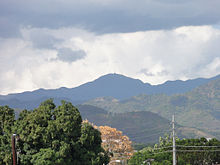Television station
A television station is a set of equipment managed by a business, organisation or other entity such as an
Overview
The Fernsehsender Paul Nipkow (TV Station Paul Nipkow) in Berlin, Germany, was the first regular television service in the world.[1][2] It was on the air from 22 March 1935, until it was shut down in 1944. The station was named after Paul Gottlieb Nipkow, the inventor of the Nipkow disk.[3] Most often the term "television station" refers to a station which broadcasts structured content to an audience or it refers to the organization that operates the station. A
Because television station signals use the electromagnetic spectrum, which in the past has been a common, scarce resource, governments often claim authority to regulate them.
Another form of television station is
Transmission

To broadcast its programs, a television station requires
Program production
Most television stations are
Many stations have some sort of
To keep pace with technology United States television stations have been replacing operators with broadcast automation systems to increase profits in recent years.
Some stations (known as repeaters or translators) only simulcast another, usually the programmes seen on its owner's flagship station, and have no television studio or production facilities of their own. This is common in developing countries. Low-power stations typically also fall into this category worldwide.
Most stations which are not
See also
- Class A television service
- Digital television transition
- Fernsehsender Paul Nipkow: the world's first regular television service[1]
- Low-power broadcasting
- Must carry
- Pay television
- Significantly viewed out of market TV stations in the United States
- Terrestrial television
- List of European television stations
- List of North American broadcast station classes
References
- ^ a b "22.3.1935: Erstes Fernsehprogramm der Welt". Deutsche Welle. Retrieved 9 March 2024.
- ^ "Es begann in der Fernsehstube: TV wird 80 Jahre alt". Computer Bild. 22 March 2015. Retrieved 9 March 2024.
- ^ "Das erste deutsche Fernsehpatent von Paul Nipkow". PC Magazin. 30 June 2015. Retrieved 17 November 2023.
External links
 Media related to Television channels at Wikimedia Commons
Media related to Television channels at Wikimedia Commons
